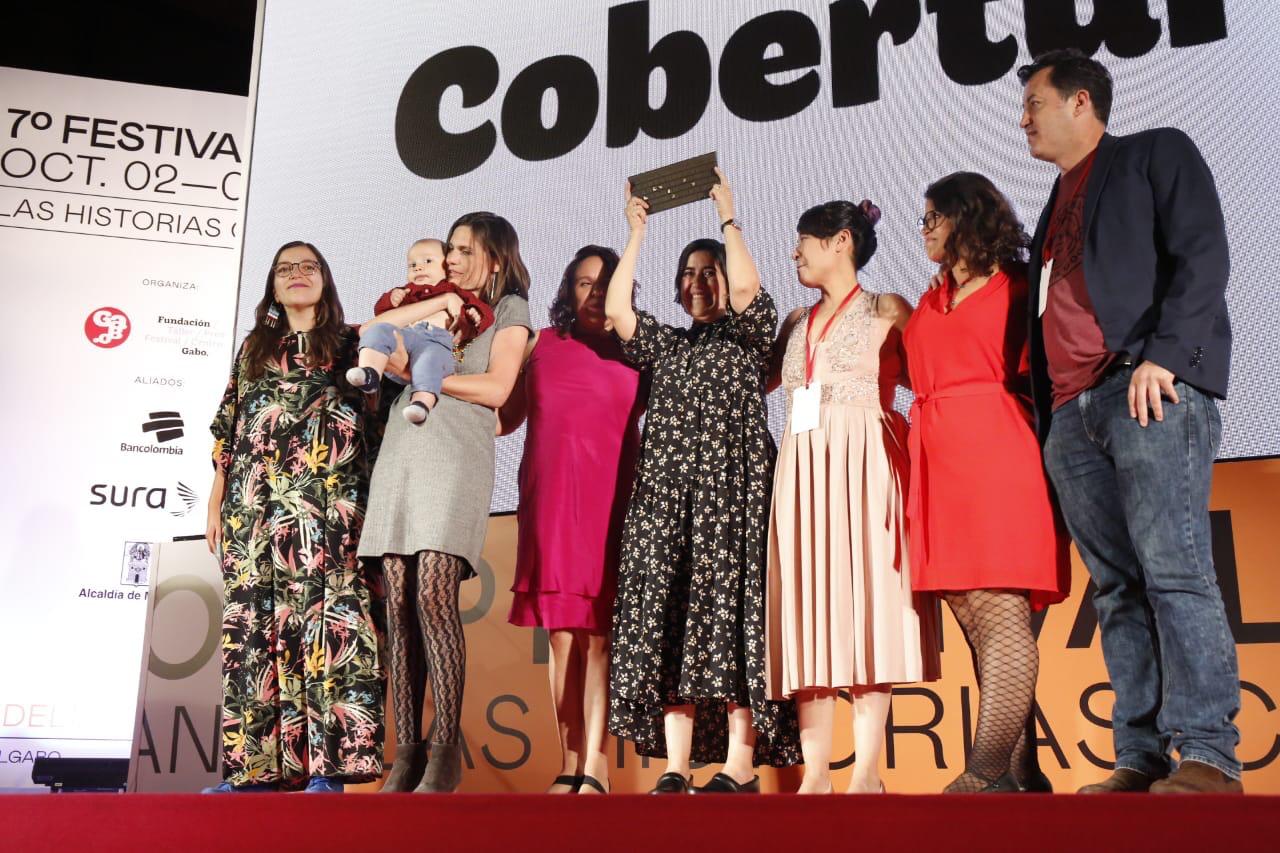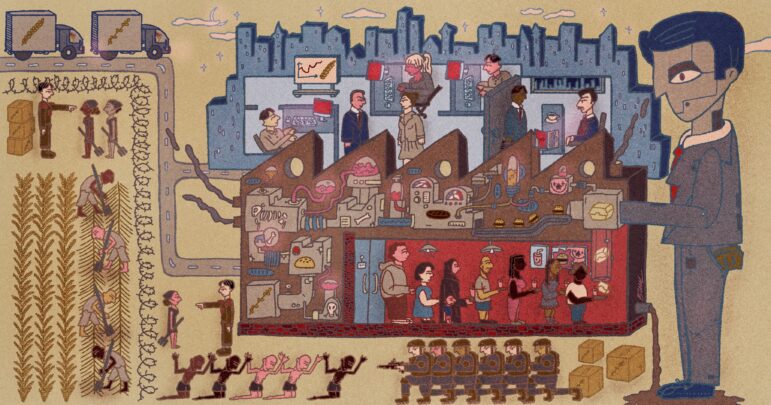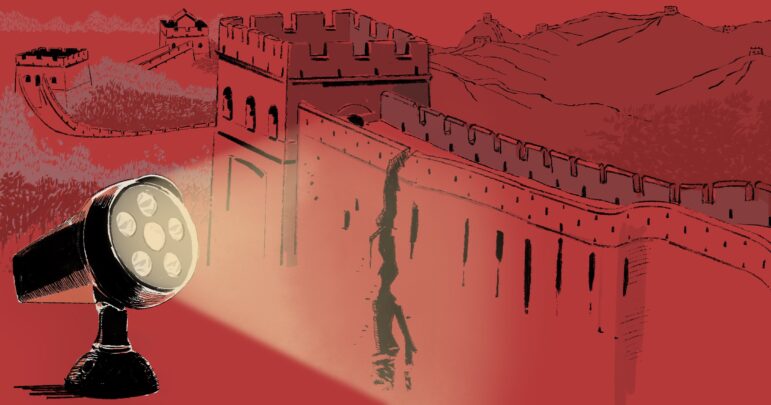

Clothes found in a "safe house" in Ciudad Mante, Tamaulipas, Mexico, in January 2017. Photo: Mónica González
How They Did It: Investigating a Country with 2,000 Clandestine Graves

Clothes found in a “safe house” in Ciudad Mante, Tamaulipas, Mexico, in January 2017. Photo: Mónica González
Mexico is a country with many layers. Unearthing its hidden stories can be a heartbreaking and dangerous task. And yet a group of independent reporters and photographers, working in different parts of the country, decided to come together as a collective called “¿A dónde van los desaparecidos?” and try to answer a fundamental question: Where do the disappeared go?
People have been disappearing in Mexico for decades, but since 2006, when President Felipe Calderón changed the country’s security policy, with more funding for military and police operations against the drug cartels, murders and disappearances increased at an alarming rate.
By the end of his six-year term, “Calderon’s Drug War” had left in its wake more than 47,000 organized-crime-related deaths. His successor, Enrique Peña, promised to curb the violence, but it continued to climb. Mexico’s murder rate (29 per 100,000 people) is three times higher than it was in 2007 and more than 40,000 people have been reported missing since 2006.
Reporters in different parts of the country had started to accompany families in the search for their loved ones. The families hoped to find them alive, but also contemplated the possibility that they could be dead and that their remains were in these places without names.
“Family members forced us to see this,” says Alejandra Guillén, a Mexican journalist from Guadalajara, who has witnessed several of those searches. She says these families began to organize themselves and formed what is now known as the National Search Brigade. They would travel across the country, enter the churches when it was time for mass, and with the priests’ authorization announce: “Those who have information, please let us know. We’re not going to tell on you. We don’t want justice. All we want is to know about our relatives.”
A few would come forward with a whispered tip or an address scrolled hurriedly on a small piece of paper. A farmer in Iguala, for example, said he knew how to identify possible graves, because of how the soil changes after it has been excavated. With the help of people like him, some of the families began to dig up remains.
Covering these excavations was difficult for journalists. Photographer Monica González says that many colleagues broke down in the process. This forced them to reflect more and discuss how they could tackle this story that was happening all over the country, and what their focus should be: What did they want to say? How could they investigate and portray what was happening, knowing that it would be harrowing for them, but also for their audiences?

Bertila Parada holds a photo of her son, Carlos Alberto Osorio Parada, a Salvadoran migrant found in a grave with 12 others in Tamaulipas in 2011. Photo: Mónica González
The Impossible Road Trip and a Nonexistent Database
Marcela Turati, a veteran writer on human rights in Mexico, who has also invested in building support and care networks among journalists in her country, was the one who summoned several colleagues to come together and report on this difficult story. Guillén was among the first to answer her call. They had already worked together on a few stories.
The pair planned to take a road trip to visit some clandestine graves that had been identified in Chihuahua, Sinaloa, Tamaulipas, Veracruz, and Jalisco. But before starting the journey, they went to a temazcal (a traditional Mexican sweat lodge, used for curative and spiritual rituals), where they asked for protection. They needed to fill themselves with “good energy” to be able to confront all the negative vibes.
The first stop on their route would be La Barca, Jalisco, in the western part of the country, where bodies had been found in a pit. Guillén wasn’t sure she could find the exact spot, so they stopped at a small road shop to ask. The young woman who worked there put down the broom she was holding, came closer, and told them: “If I send you there, I will send you to the grave. That place is still being used to bury people.” She added that it was better for them to leave, as surely the “hawks” (as they call the informants of organized crime groups) had already seen their car. They left immediately.
If the layer of graves they planned to investigate was being covered with more bodies, it was going to be impossible to do field reporting, as they had planned. After this warning, which underscored just how dangerous it was to report this story, they decided that they would work on creating a database or registry, because there wasn’t an official one at a national level. They wondered: Why didn’t it exist?
They distributed the work between themselves and several additional journalists, and decided to make official requests for information to each of the 32 Mexican states and the General Attorney’s National Office. Guillén, who has always been more of a field reporter, wanting to see things with her own eyes, ended up filing many of the FOIA requests — not knowing very well what she was doing, she confesses: “I didn’t have much experience and I wasn’t sure what data we could get.”
The Numbers of Horror
In total, they made 197 requests for information. When the first responses began to arrive, they realized that there was no single criteria or unified methodology among the district attorneys’ offices in each state and at the national Attorney General’s office. They named things differently, or sometimes they didn’t name them at all. In Aguascalientes, for example, officials claimed not to know what a “pit” was. And when asked about the “kitchens” — the informal and common way of talking about dissolving corpses with acid — they said they didn’t know what that meant.
Some states refused to provide the information they requested. They had to write seven appeals. One of the key arguments they used was that these were crimes against humanity and, therefore, no reason to hide or deny requests for this data.
To process and organize all the responses, they needed additional help. That’s why Mago Torres and David Eads joined the team. They provided a different set of skills and a more distant perspective — literally, because they live in the United States — that allowed them to step back and start building the database by filtering, cleaning, and making sense of the numbers. After that tortuous process, they discovered that they would only be able to show how many graves there were at the municipal level, per year, and how many bodies were estimated to have been buried in each of them. “Our numbers may have errors because this is the reality of the information that exists,” says Torres.
Once they started adding, cross-checking, visualizing, and mapping the data, taking into account three dimensions (space, time, and density), they finally saw the extent of the horror.
A previous independent investigation carried out by the Iberoamericana University in Mexico City had found 390 clandestine graves between the years 2009-2014, in a portion of Mexico’s states. Mexico’s Interior Ministry reported 855 in all the country. The National Search Commission, in charge of leading search efforts for missing people, said 1,150. And the National Human Rights Commission said that from January 2007 to May 2018, it had located 1,306 graves.
The collective’s data, which analyzed the whole decade (2006-2016) in all of the states, showed the numbers were much higher than both the university study’s figures and the disparate official figures: there were at least 2,000 graves in the country (equal to one every two days), located in one out of every seven municipalities.
By putting the numbers on a timeline, they could see these clandestine burials had increased from 2006 until reaching a peak in 2011. Since then, the pace has remained constant. How many of the 40,000 people that had disappeared between 2006 and 2018, the periods spanning the presidencies of Felipe Calderón and Enrique Peña Nieto, were in those graves?
The investigation took almost two years. There were many breaks because it was emotionally difficult for the different members of the team to deal with it. For this reason, Torres realized that they needed to finish the project; they needed to have an “emotional deadline.” She did not want her dining room to be invaded by the data and the maps of the graves eternally, nor for Guillén to continue seeing photos of remains during her final months of pregnancy. They needed to publish — and soon.
It was then that Quinto Elemento (The Fifth Element), an independent investigative journalism outlet and a GIJN member, stepped in to help. “We arrived at a crucial moment, so the mood would not decline more,” says its director, Alejandra Xanic. From her experience, she knows that research projects have cycles and sometimes it’s necessary to call an outsider who can provide additional support.
Quinto Elemento helped them review and edit maps and texts. They also helped them understand that it was a huge story. They couldn’t just publish it in independent and niche media; they needed to reach out widely. They created an ambitious publishing strategy, which worked: The full story would run in 22 media outlets (15 national and 7 regional). Another 36, including some international outlets, would also end up picking up the story.
The Silent Response
“It was only after November 12, 2018, when we launched the project, that we understood the social impact of our work,” says Paloma Robles, another journalist on the team. They had been so enmeshed in the reporting for so long that they could not imagine what the story would mean to others once it came out.
The story, “2,000 Clandestine Graves: How a Decade of the Drug War Turned Mexico into a Burial Ground,” with interactive national and state maps, was published just at the tail end of the Peña Nieto presidency. But there was no official statement or response to the investigation.
The same day that it was published, the journalists hosted an event in Mexico City, which some of the families searching for their loved ones attended. Some even traveled from other states, such as Durango or Guerrero. They kept absolute silence while journalists talked about circles and numbers: the representation of their dead on the map. Some time later, several of these families would use those maps and the database that the journalists had created to demand the truth about their relatives’ cases from the district attorneys.

The team of journalists after receiving a Gabo award in October 2019. Photo: Courtesy Quinto Elemento
Pending Questions
“We didn’t get all the answers — we only reached the first layer,” Guillén says, about what they achieved with the database and maps. “If someone wants to erase it, we have this registry here. They cannot deny what is happening.”
Since they published the investigation, and won several awards for it (Gabo 2019, Colpin 2019), these journalists have been asking themselves additional questions: Who are the people buried in the graves? (Only 1,738 victims have been identified.) Why were they killed? Who killed them? When? Are there changes by region or over time? Are there different or similar patterns?
They have also identified that there are other maps created by journalists (such as this one that shows confrontations between the armed forces and civilians) that need to be compared and analyzed with the clandestine graves maps.
But continuing this increasingly complex archaeological work is tough. It not only requires time and resources that the team lacks, it also demands an enormous amount of courage and inner strength.
The support groups they created during the investigation, both face-to-face and on WhatsApp, helped the team members deal with their fears and sorrows. When Turati received additional funds, she invested them in therapy for everyone. She says it was the best decision and an important lesson: “It was a year and a half of discovering how to deal with pain.”
 Catalina Lobo-Guerrero is GIJN’s Spanish Editor and a freelance journalist. She has reported on politics, armed conflict, human rights and corruption in Latin America, mostly in Colombia and in Venezuela, where she was a foreign correspondent for three years.
Catalina Lobo-Guerrero is GIJN’s Spanish Editor and a freelance journalist. She has reported on politics, armed conflict, human rights and corruption in Latin America, mostly in Colombia and in Venezuela, where she was a foreign correspondent for three years.









